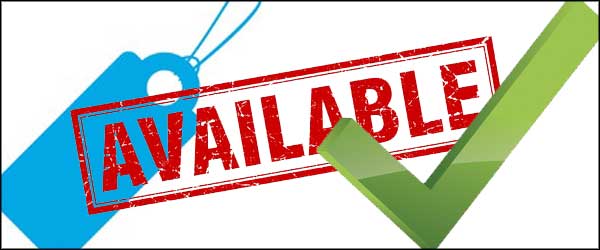Making your purchasing decisions based on all three of the main considerations – price, availability, and user acceptance – will make your next product transition easier on everyone involved.
Purchasing decisions can seem overwhelming. Not only are you trying to decide what to purchase and the price that you are willing to pay, there is the added complexity of getting your employees to accept a product and training them to use it properly. Employees can make even the easiest and seemingly most logical of decisions a nightmare if you don’t manage the process well.
The three main considerations when purchasing a new product or replacing an old product are Price, Availability and User Acceptance. Of the three, user acceptance is by far the most necessary consideration.
Price (and other Costs)
While price is a necessary and important consideration, it is important to look at ALL of the costs involved when thinking of making a change.
Purchase Price: One of these considerations might be quantities and the discounts associated with them. American Maid gets a great price on gloves but only because we can buy in fairly large quantities and there are additional costs associated with that.
Acquisition Costs: Will there be a shipping charge? Will we have the additional costs associated with driving somewhere and purchasing off the shelf?
Inventory/Storage Costs: When you buy in bulk to save on purchase price, space and shrinkage are related costs once the product is in your hands. Luckily we do have plenty of storage space and the quantity that we buy lasts from 2-3 months, which is not very long in the overall scheme of things.
Shrinkage Costs: But the longer items remain on the shelves, the greater our risk of damage and potential for items to come up missing.
All of these costs and potentially others will need to be included in your cost analysis.
Availability
The availability of products that you will need on a daily basis can’t be overlooked in your enthusiasm to get the newest, best, or coolest product.
We used to use a wonderful air freshener: all-natural, very clean-smelling, frequently commented on by our clients as proof that we had done an excellent job cleaning. We truly loved this product.
Unfortunately it was a nightmare to obtain. Orders would frequently be 30-60 days later than promised, and we once waited 6 months for a shipment due to faulty nozzles I think. It was possible to buy retail for 35% more than wholesale, but then the cost was prohibitive.
This is an example of a product that, while being totally loved, was not a good decision for the company. Remember those clients who were so quick to remark on what a fabulous job we had done cleaning as was evidenced by the wonderfully clean smell? Well, that conversation sounded a whole lot different when we were juggling with the availability!
Very small companies, niche products, sale items, etc., can all cause availability issues that may make for a poor product choice.
User Acceptance
Regardless of what you spend on a product or how readily available it is, if your employees don’t find value in it they won’t use it whenever they can easily get away with it. And they will resent you forcing them to use it when they do. If you are attempting to solve a problem that your employees have voiced, your transition will be much easier.
But what if you want to reduce costs and finally do away with that ready-to-use (RTU) consumer product that is 50x the cost of the commercial grade product with a dilution ration of 20:1 – that everyone LOVES? That’s a little trickier.
One way to virtually guarantee not only acceptance of your new product but possibly even adoration and loyalty is to get buy-in from the people who will be using it. Adopt the following process for a simple but effective transition:
 Choose a team of people to evaluate potential new products; small companies may only have one person.
Choose a team of people to evaluate potential new products; small companies may only have one person. - Using the download with this article, rate the cost and availability of the product(s) in question.
- Provide multiple choices of each product you wish to change; 2-3 alternatives are sufficient. Only give them items to evaluate that receive acceptable ratings in the other two areas. Make sure that you will be able to accept the team’s recommendation.
- Print the form and send with each member of the evaluation team.
- Explain the cost and availability ratings to the team and the value you place on their input. Be clear that you are changing products and it is a matter of what you change to, not if you are changing.
- Ask the team to evaluate in at least three different ways each and to give good feedback on what they find.
- Accept the recommendation. Be prepared that they may still not love the new product. Point out all of the additional benefits and how it is helping the company to use this better fit.
Making your purchasing decisions based on all three of the main considerations will make the transition easier on everyone involved. Good luck!

Liz Trotter is founder of American Maid Cleaning as well as an entrepreneur and leadership trainer based in Olympia, Washington. She is also a former ARCSI board member, creator of the award-winning Maid Money employee motivation program and the HiPEP Daily Engagement Video (DEV) daily employee training series as well as a charter member of Cleaning For A Reason.






